
This post was written by Adam Dalton, 2014 & 2016 Mono Lake Intern.
When I signed the Mono Lake intern employment contract early this summer, I noticed the document stated I was obliged to, “complete other tasks as necessary.” Never did I imagine that a “necessary task” would comprise of hiking through beautiful high-elevation meadows, conifer-flanked streams, and the Californian high desert in search of wildflowers!
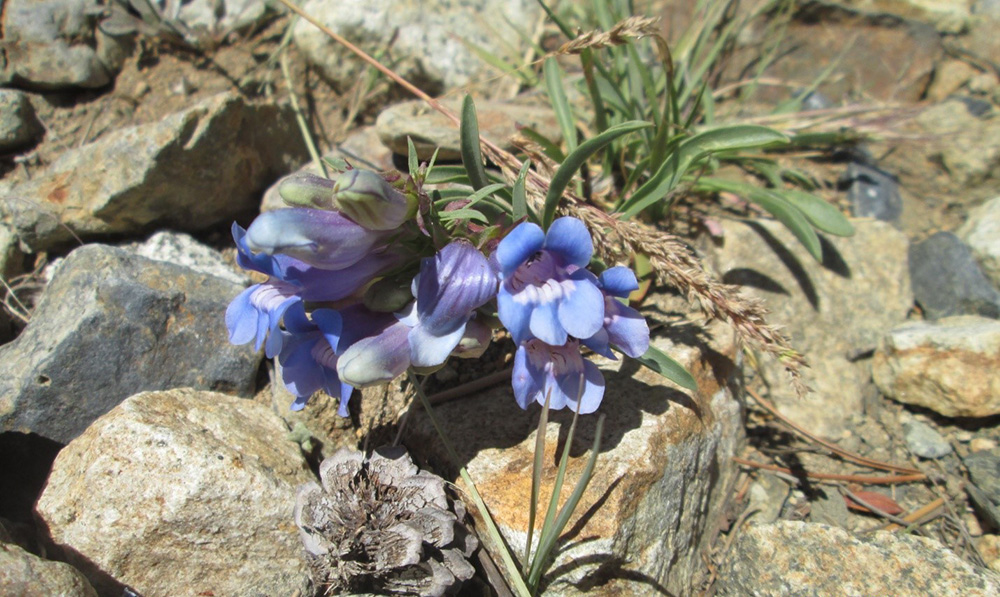
Although sometimes overlooked in favor of birds, fish, trees, or other aspects of the natural environment, the Eastern Sierra’s small-yet-wonderful wildflowers command our attention with their dramatic and varied coloration. Due to nearly unparalleled variances in elevation, water availability, and sun exposure, the Mono Basin hosts a wide variety of wildflowers encompassing nearly every color imaginable. Currently, the basin’s wildflowers are out in full bloom; below find a few examples of Mono’s beautiful and charismatic flora.
On a personal note, as an extremely-Midwestern economics major I found the task of finding and identifying wildflowers to be both fun and more challenging than anticipated; but don’t worry, I fact-checked my flower descriptions with multiple flora experts at the Mono Lake Committee. If you are looking to personally identify the Eastern Sierra’s wildflowers, I would recommend both the Laws Field Guide to the Sierra Nevada by John Muir Laws, and Wildflowers of the Eastern Sierra and Adjoining Mojave Desert and Great Basin by Laird Blackwell. Additionally, in terms of online guides, I found the BLM’s Wildflower Hotspots of the Eastern Sierra and discoverlife.org’s interactive wildflower identifier to be quite helpful. Now get out there and find some amazing wildflowers for yourself!
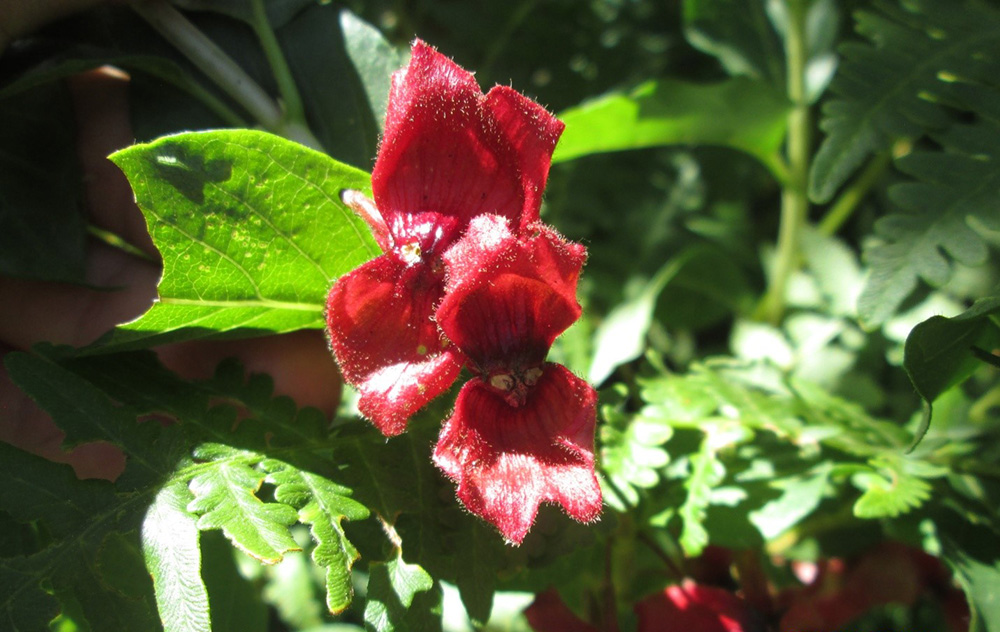
Name: Twinberry honeysuckle (Lonicera involucrata)
Location spotted: Warren Fork
Range in USA: Western United States, Upper Midwest (elevation: 0–10,000 feet)
Flowering season: June–July
Fun fact: Twinberry honeysuckle’s flowers attract hummingbirds and birds feed on the honeysuckle’s fruits.1
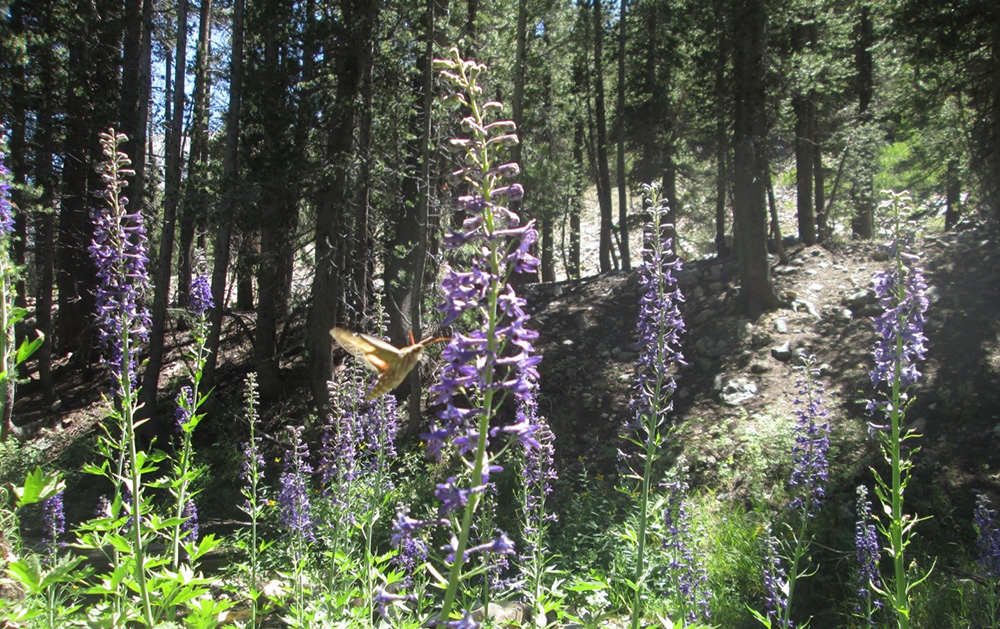
Name: Glaucous larkspur (Delphinium glaucum)
Location spotted: Warren Fork
Range in USA: Western United States (elevation: 4,000–8,000 feet)
Flowering season: June–August
Fun fact: Larkspur are poisonous to both humans and cattle due to their high alkaloid content.2
Name: White lined sphinx moth (Hyles lineata)
Location spotted: Warren Fork
Range in USA: Majority of the United States
Fun fact: The white lined sphinx moth is an important pollinator; when fully extended, its tongue can exceed ten inches in length.3
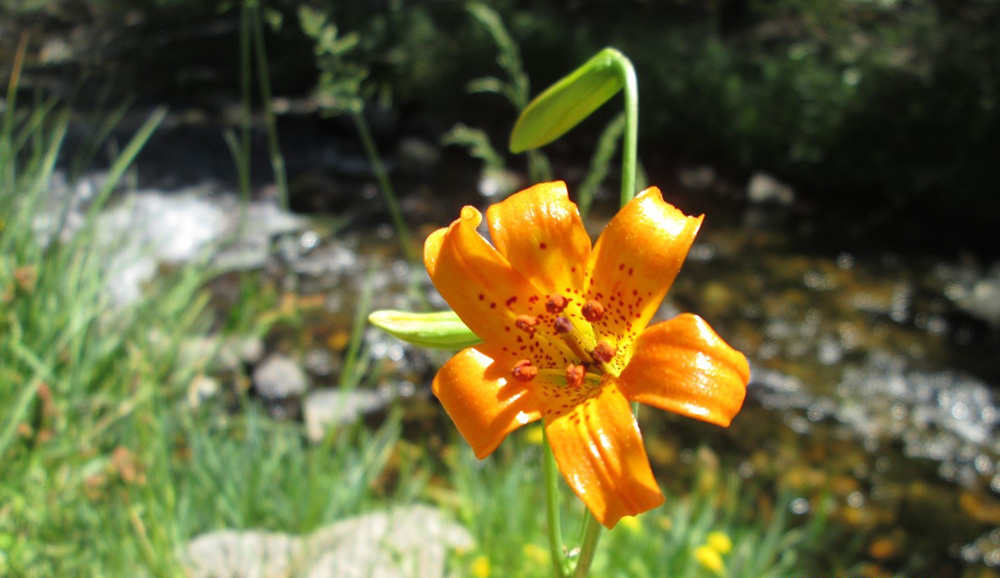
Name: Alpine lily (Lilium parvum)
Location spotted: Lundy Canyon
Range in USA: CA, NV, OR (elevation: 4,000–9,000 feet)
Flowering season: June–August
Fun fact: In the foothills of El Dorado County, California, there exists a variety of alpine lily that bears lighter pink flowers. This flower is known by the informal common name, ditch lily.4

Name: Davidson’s penstemon (Penstemon davidsonii)
Location spotted: Warren Fork
Range in USA: California, Nevada, Oregon, Washington (elevation: 6,000–10,000 feet)
Flowering season: July–August
Fun fact: Davidson’s penstemon exhibits low mat forming growth, you’’ll have to look low to the ground in order to find it.5
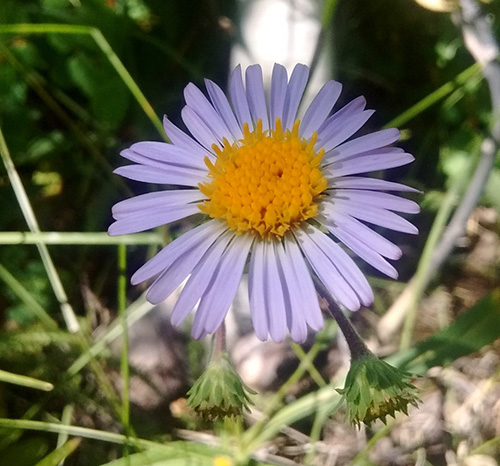
Name: Wandering daisy (Erigeron glacialis)
Location spotted: Lundy Canyon
Range in USA: California, Oregon, Washington (elevation: Usually above 5,000 feet)
Flowering season: June–September
Fun fact: The wandering daisy is also known colloquially as wandering fleabane.6
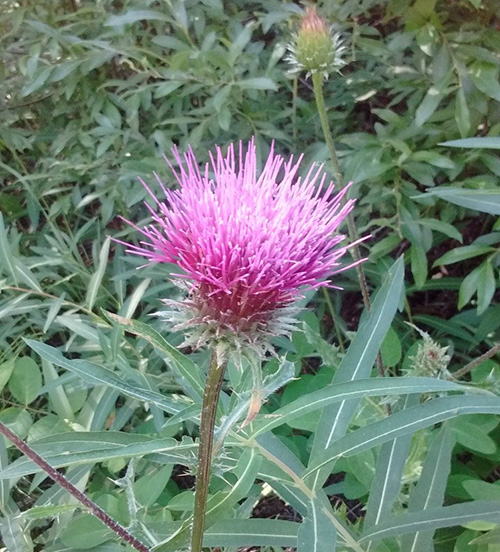
Name: Purple bristle thistle (Carduus nutans) (invasive)
Location spotted: Lundy Canyon
Range in USA: Invasive in California (elevation: 0–8,200 feet)
Flowering season: June–September
Fun fact: Although beautiful, the purple bristle thistle is a commonly-occurring and widespread invasive species in the state of California. On a positive note, the plant has largely been eradicated from the greater Southern California region.7
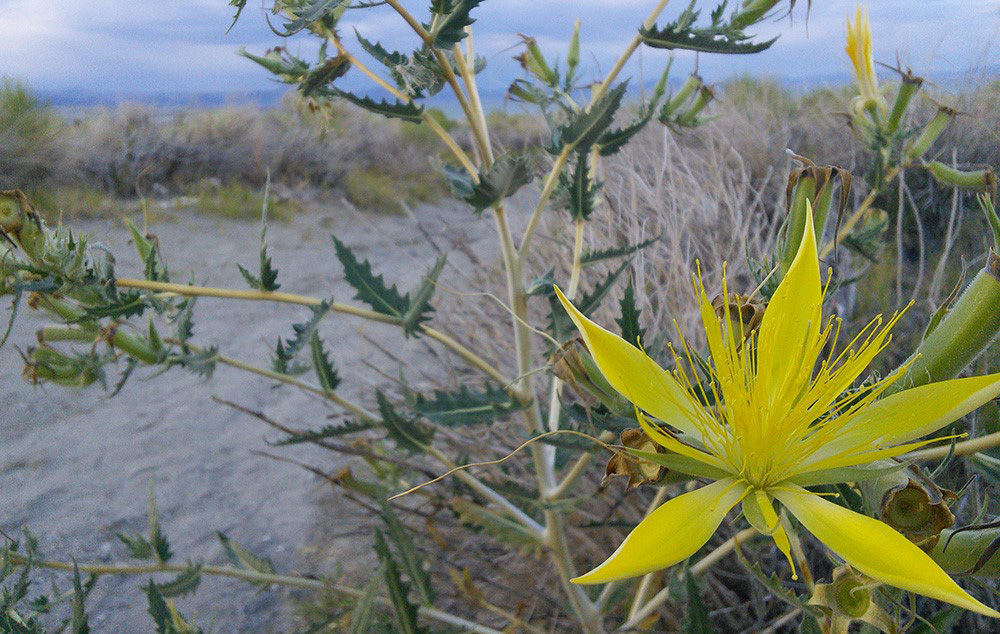
Name: Giant blazing star (Mentzelia laevicaulis)
Location spotted: Navy Beach
Range in USA: Western United States, excluding the desert southwest (elevation: 0–8,000 feet)
Flowering season: June–September
Fun fact: Giant blazing star is one of the few flowers you are able to spot in the Mono Basin’s South Tufa/Navy Beach area due to its ability to survive in relatively dry and salty environments.8
—
Sources Cited
- Malaby, Sarah. “Plant of the Week: Twinberry Honeysuckle.” Twinberry Honeysuckle. May 26, 2014. Accessed July 31, 2016.
- “Types of Larkspur Flowers.” The Flower Expert. August 14, 2011. Accessed July 31, 2016.
- “Species Hyles Lineata – White-lined Sphinx Moth.” BugGuide.Net. November 08, 2012. Accessed July 31, 2016.
- “Alpine Lily: Lilium Parvum.” Calscape.org. August 11, 2009. Accessed July 31, 2016.
- Slichter, Paul. “Davidson’s Penstemon.” Halley Hosting (Science). June 19, 2010. Accessed July 31, 2016.
- Turner, Mark. “Erigeron Peregrinus – Wandering Daisy | Wildflowers of the Pacific Northwest.” June 02, 2014. Accessed July 31, 2016.
- “Carduus Nutans.” Wikipedia. July 12, 2016. Accessed July 31, 2016.
- Gray, A., and Torr. Gray. “Smooth-stem Blazing Star.” Usda.gov. September 2011. Accessed July 31, 2016.

Great post, Adam – I’m off to the high country!